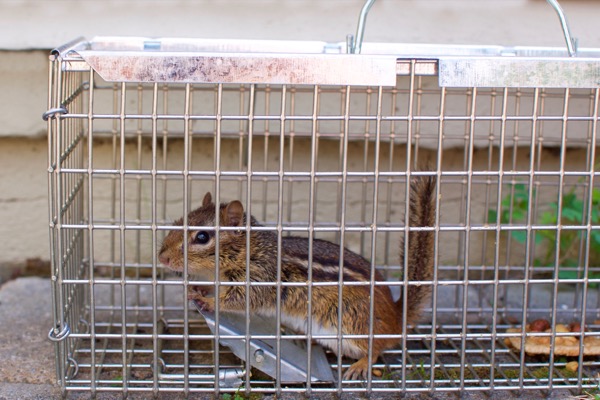How to Perform Chipmunk Pest Control

Description
Biology
Chipmunks mate two times a year, during early spring and again during the summer or early fall. There is a 31-day gestation period. 2 to 7 young are born in April to May and again in August to October. Chipmunk pups appear above ground when they are 4 to 6 weeks old - 2/3 the size of an adult. Pups will leave the burrow at 6 to 8 weeks. The young are sexually mature within 1 year. Adults may live up to 3 years.
Although chipmunks are ground dwellers they do often climb tress in search of food. Chipmunks regularly consume foods such as grains, nuts, berries, seeds, mushrooms, insects, and other scavenged items.
Typically only 2 to 4 animals per acre occur in most areas. There may be as many as 10 chipmunks per acre, however, if sufficient food and suitable burrowing sites are available. Territories often overlap among individuals.
Damage
How To Get Rid of Chipmunks
Trapping

Trapping is the most effective way to get rid of Chipmunks. Havahart offers a safe, effective live animal trap that comes ready to use.
- Prebait first. It is helpful to "prebait" traps for 2-3 days prior to setting out a live trap. Prebait by putting your choice of bait (peanut butter, nutmeats, pumpkin or sunflower seeds, raisins, prune slices, or common breakfast cereal grains) in and around a trap with the doors wired open. This allows the chipmunks time to get used to the trap and the food source it provides.
- Activate the Trap. After the pre-baiting time period is up, set the live trap in the same area with the same type of bait.
- Check traps often, releasing non-target animals.
- Release. After chipmunks are trapped they should be driven several miles away from your property and released or otherwise dispatched according to your local and state ordinances.
You may also use a snap trap designed for rats, following the same baiting methods described above for the live trap.
Products needed for Step 1
Gassing
Exclusion
Exclusionary practices as well as habitat modifications may keep chipmunk numbers down or drive them off of your property completely.
- Remove wood piles, debris, or plantings of ground cover that provide above-ground protection.
- Place bird feeders at least 15 to 30 feet away from buildings so spilled bird seed does not attract and support chipmunks near them.
- Put away pet food dishes after feeding time.
- Chipmunks should be excluded from buildings wherever possible. Use metal mesh, caulking, or other appropriate materials to close openings where they could gain entry.




